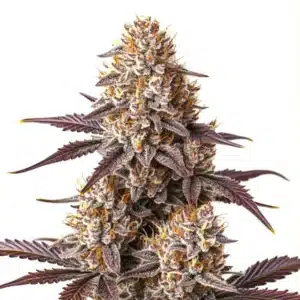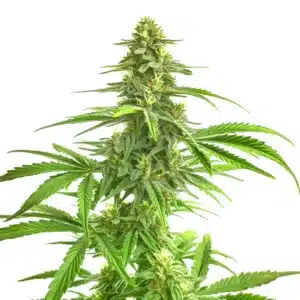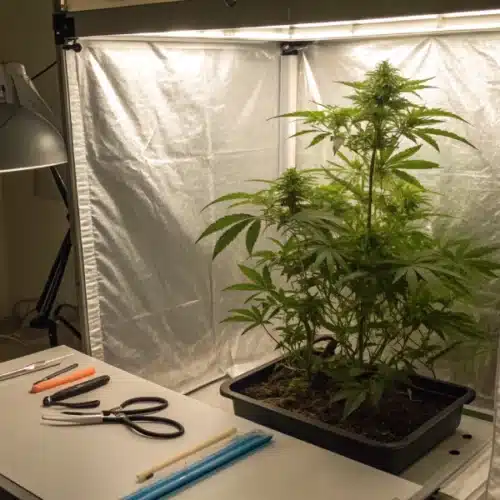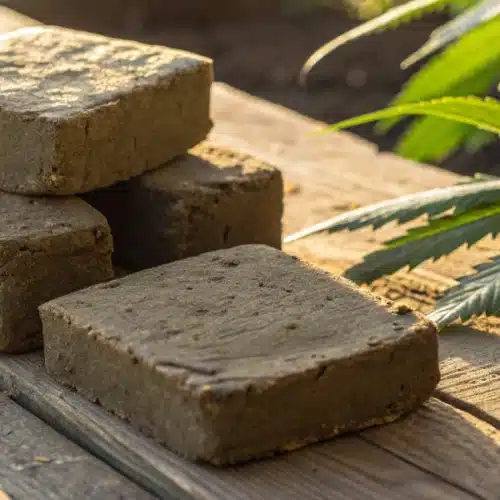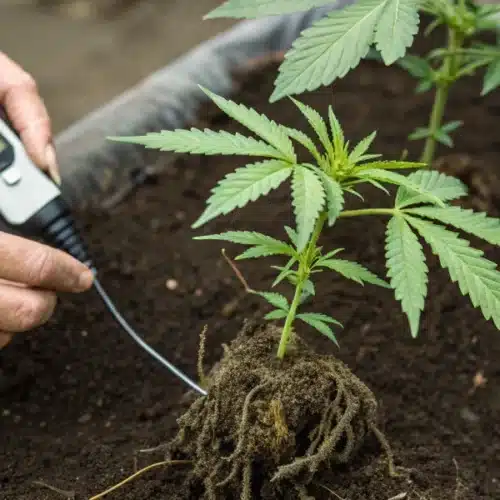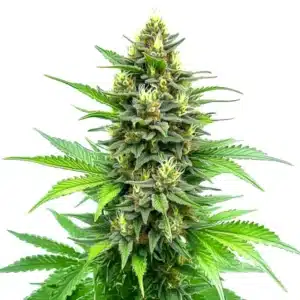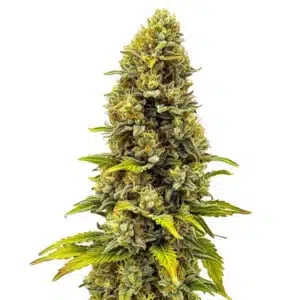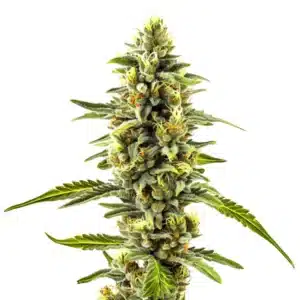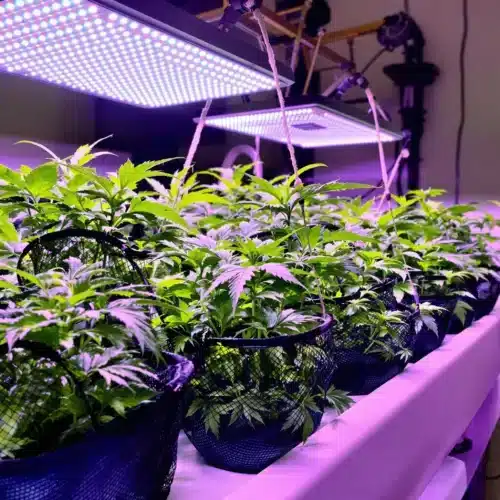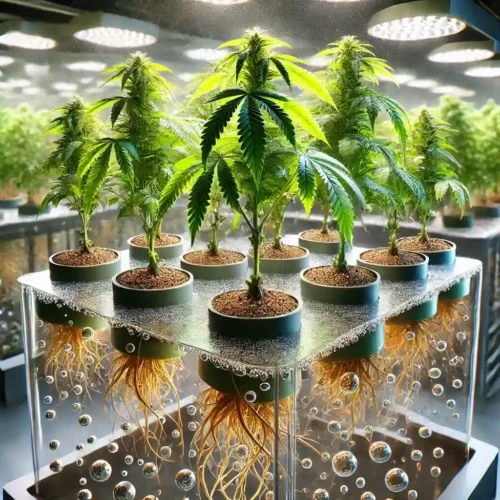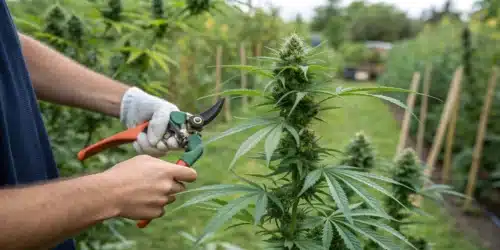One of the key advantages of hydro system cannabis growing is the ability to precisely control the nutrient levels. In a hydroponic system, plants rely entirely on the nutrient solution for their growth, so knowing how to manage nutrients is important to maximizing yields and ensuring healthy plants.
Knowing pH and EC Levels in Hydroponics
pH and electrical conductivity (EC) levels play a vital function in nutrient uptake when growing cannabis hydroponically. pH refers to how acidic or alkaline the nutrient solution is, while EC measures the concentration of nutrients (salts) in the water. Both factors determine how well your plants can absorb the essential nutrients they need.
For hydroponic cannabis grows, keeping the pH level between 5.5 and 6.5 is ideal. If the pH is outside of this range, nutrient lockout can occur, meaning your plants won’t be able to absorb nutrients, even if they are present. EC levels, on the other hand, should be adjusted based on the stage of growth, seedlings require lower EC levels, while mature plants in the flowering stage can handle higher concentrations.
Regularly checking and adjusting your pH and EC levels ensures that your plants are in the ideal range for nutrient absorption, promoting faster growth and bigger yields in a hydro system cannabis setup.
Promos & Deals
How to Mix Nutrients for Optimal Cannabis Growth
Mixing nutrients properly is key to maintaining the ideal nutrient balance in your hydro system. Start by choosing a high-quality hydroponic nutrient solution that is specifically formulated for cannabis. These nutrients will contain the right balance of macronutrients (nitrogen, phosphorus, and potassium) and micronutrients (calcium, magnesium, iron, etc.) that cannabis needs at different stages of growth.
Always follow the manufacturer’s instructions when mixing nutrients, and be sure to add them to water, not the other way around. Mixing nutrients in the wrong order or with incorrect proportions can lead to nutrient imbalances that may harm your plants. After mixing, use a PPM (parts per million) meter to check the concentration of nutrients in the solution. This will ensure that your plants are receiving the right amount of food.
Tips for Maintaining Nutrient Solutions in Hydro Systems
Keeping your nutrient solution clean and balanced is essential for healthy plant growth in a hydro system cannabis setup. Here are a few tips for maintaining optimal nutrient solutions:
- Change the Nutrient Solution Regularly: Even though hydro systems are recirculating, nutrients can deplete over time, and contaminants can build up. Changing the nutrient solution every 1-2 weeks helps keep the system clean and ensures your plants are getting fresh nutrients.
- Monitor Temperature: Keeping the nutrient solution at the right temperature is critical for preventing root diseases like root rot. Aim to keep the water temperature between 65°F and 75°F (18°C – 24°C) for best results.
- Check for Algae Growth: Algae can form in nutrient reservoirs, especially in warm conditions. If you notice any green or slimy growth, clean the reservoir immediately to prevent it from affecting your plants. Using opaque containers for your nutrient solution can help prevent algae growth by blocking out light.
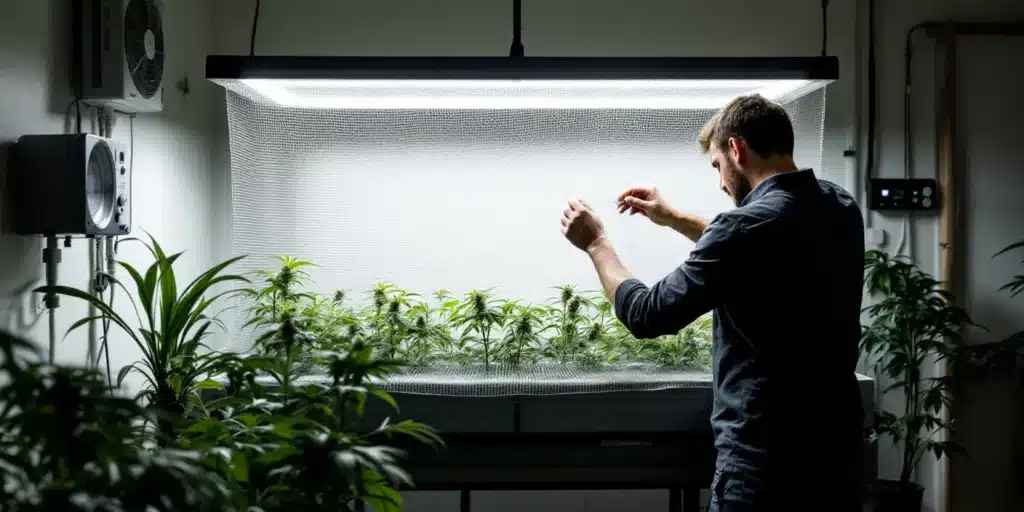
Preventing Common Problems
While hydroponic systems offer many advantages, they also come with their own set of potential challenges. Preventing common issues in a hydro system cannabis setup is important to keeping your plants healthy and avoiding problems like root rot, algae buildup, and nutrient imbalances.
How to Avoid Root Rot in Hydro Cannabis Grows
Root rot is one of the most common issues that can affect plants in a hydroponic system. It occurs when the roots are deprived of oxygen, typically because the water temperature is too high or the nutrient solution isn’t properly oxygenated. This can cause the roots to turn brown and mushy, leading to plant death if not addressed quickly.
To prevent root rot, ensure your nutrient solution is well-oxygenated by using an air pump and air stones. Keeping the water temperature between 65°F and 75°F is also important, as warmer water holds less oxygen, making root rot more likely. If you notice early signs of root rot, such as discolored roots or wilting plants, consider adding beneficial bacteria or root supplements that can help protect the roots and fight off disease.
Managing Algae and Pests in Hydroponic Setups
Algae can be a significant issue in hydro system cannabis setups, as it thrives in warm, nutrient-rich environments. Algae competes with your plants for nutrients, and if left unchecked, it can clog your system and create an unhealthy growing environment. To prevent algae, keep your nutrient reservoir covered and protected from light, as algae need light to grow.
Pests, while less common in hydro systems than in soil grows, can still be an issue. Fungus gnats, for example, are attracted to moist environments and can lay eggs in the growing medium. To manage pests, keep your grow area clean, use sticky traps to catch flying insects, and consider using beneficial insects, such as predatory mites, to control infestations naturally.
Troubleshooting Water and Nutrient Issues in Hydro Systems
In a hydro system cannabis setup, water and nutrient issues can quickly lead to plant health problems. Monitoring your system regularly and addressing issues as soon as they arise is critical for maintaining a healthy grow.
If you notice nutrient deficiencies (such as yellowing leaves or stunted growth), check the pH and EC levels of your nutrient solution. Nutrient lockout due to pH imbalances is often the cause of these issues. Flushing the system with clean water and adjusting the pH can help restore balance.
Similarly, water flow issues, such as clogged pumps or low oxygen levels, can lead to poor plant growth. Regularly cleaning your system and checking equipment will help ensure everything runs smoothly.

Advantages and Disadvantages
Hydroponic systems offer a range of benefits for cannabis growers, from faster growth rates to better control over nutrient intake. However, like any cultivation method, there are also challenges and potential drawbacks that need to be considered. In this section, we’ll dive into the advantages and disadvantages of using a hydro system for growing cannabis, so you can determine if this method is right for you.
Advantages of Hydro System Cannabis
Hydroponic systems have become increasingly popular among cannabis growers due to their efficiency and the results they produce. Here are some of the key benefits of using a hydro system cannabis setup:
Faster Growth Rates
One of the biggest advantages of hydro system cannabis is the accelerated growth rates. In a hydroponic system, plants are given direct access to a nutrient-rich solution, allowing them to absorb the necessary nutrients more efficiently than in soil. This leads to faster growth, meaning you can harvest your plants sooner and potentially grow more cycles throughout the year.
Faster growth also means you can see the results of your efforts more quickly, making hydroponics an appealing choice for growers who want to maximize productivity.
Higher Yields
Hydroponic systems are known for producing higher yields compared to traditional soil-based grows. Because the plants are given optimal nutrient levels and the growing environment is controlled, they can focus their energy on developing larger, denser buds. Many growers report significantly higher yields when switching to a hydro system cannabis setup, making it a great option for those looking to increase their harvest.
The efficiency of nutrient delivery in a hydroponic system also helps minimize nutrient waste, allowing your plants to use all available resources to grow more vigorously.
Better Control Over the Growing Environment
With a hydro system cannabis setup, you have full control over the growing environment, including water, nutrients, light, and airflow. This level of control allows you to fine-tune the conditions to suit your plants’ needs at each stage of growth. In contrast, soil grows are more susceptible to changes in the environment, such as nutrient depletion or poor drainage.
In a hydroponic system, you can monitor and adjust pH, nutrient levels, and water temperature with precision, ensuring that your plants have everything they need to thrive. This control reduces the risk of common issues like nutrient deficiencies, overwatering, or pests that can affect soil-based grows.
Reduced Risk of Pests and Diseases
Soil can harbor pests, bacteria, and fungi that can damage your cannabis plants, leading to lower yields or crop failure. By eliminating soil from the equation, hydro system cannabis setups dramatically reduce the risk of pest infestations and soil-borne diseases.
While hydroponic systems are not completely immune to pests and diseases, they are less likely to encounter issues like root rot, fungus gnats, or mold. This cleaner growing environment allows your plants to focus on healthy growth without the added stress of battling pests.
Water Efficiency
Hydroponic systems use significantly less water than traditional soil growing methods, making them an eco-friendly option for growers who want to reduce their environmental impact. Because hydro systems recycle water through a closed-loop system, very little is wasted. The water that isn’t absorbed by the plants is filtered, oxygenated, and recirculated, leading to greater water efficiency.
This is particularly beneficial for growers in regions with limited water access or during drought conditions, as hydro system cannabis setups conserve water while still providing an optimal environment for plant growth.
Disadvantages of Hydro System Cannabis
While hydroponic systems offer many benefits, they also come with challenges that need to be considered before setting up a grow. Here are some of the potential disadvantages of hydro system cannabis growing:
Higher Initial Setup Costs
One of the biggest drawbacks of hydro system cannabis setups is the higher initial investment compared to soil growing. Setting up a hydroponic system requires purchasing specialized equipment, such as grow lights, water pumps, air pumps, nutrient reservoirs, pH and EC meters, and hydroponic nutrients.
Although the long-term savings in water and nutrient efficiency can offset these costs, the upfront investment can be a barrier for beginner growers or those on a tight budget.
Steeper Learning Curve
Hydroponic growing requires a higher level of knowledge and attention to detail than traditional soil growing. Knowing how to manage pH, EC, and nutrient levels, as well as keeping water oxygenated, can be overwhelming for first-time growers. Mistakes in nutrient management or water flow can quickly lead to plant stress or crop failure.
While soil acts as a natural buffer, offering some leeway if mistakes are made, hydro system cannabis grows are more sensitive to imbalances. This steeper learning curve means that hydroponic growing may not be ideal for beginners who aren’t ready to closely monitor and adjust growing conditions.
Greater Maintenance Requirements
A hydro system cannabis grow requires more ongoing maintenance compared to soil grows. Regularly checking pH levels, nutrient concentrations, water temperature, and oxygen levels is essential to ensure that your plants remain healthy. In addition, equipment like water pumps and air pumps need to be maintained to prevent system failures.
Any disruption in the water or nutrient delivery system can have immediate negative effects on the plants, so hydroponic setups require consistent monitoring and maintenance to prevent problems from arising.
Power Dependency
Hydro system cannabis grows rely heavily on electricity to power pumps, lights, and ventilation systems. In the event of a power outage, your plants can quickly suffer if they aren’t getting the nutrients and oxygen they need. A power failure can lead to stagnant water, which increases the risk of root rot and other problems.
Backup power sources, like generators or battery backups, are recommended to ensure your plants aren’t left without the necessary support in case of an outage.
Risk of Root Disease
While hydroponic systems are less prone to certain soil-borne diseases, they are more susceptible to root diseases like root rot, particularly if the water temperature is too high or the oxygen levels are too low. Root diseases can spread quickly in a hydro system, and once they take hold, they can be difficult to eliminate.
Proper system maintenance, including regular cleaning and oxygenating the water, can help prevent root disease. However, the risk remains higher in hydroponic systems than in soil grows, where the root zone is naturally aerated.
Comparing Hydro System Cannabis to Traditional Soil Growing
To fully understand the advantages and disadvantages of hydro system cannabis, it’s helpful to compare it directly to traditional soil-based growing. Each method has its strengths and weaknesses, and choosing the right one depends on your goals, experience, and available resources.
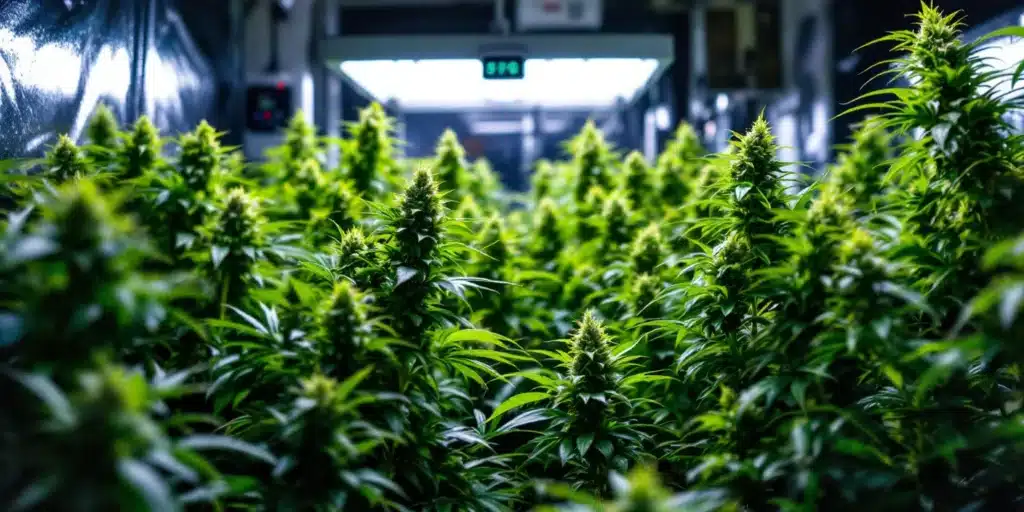
Faster Growth vs. Natural Growth Rates
One of the most significant differences between hydro system cannabis and traditional soil growing is the speed of plant growth. In hydroponics, plants tend to grow much faster because they have direct access to nutrients, water, and oxygen, all of which are carefully controlled. This results in faster vegetative and flowering stages, allowing for more frequent harvests.
In soil-based growing, plants rely on the nutrients present in the soil, which are absorbed more slowly. This slower, more natural growth rate can be beneficial in some cases, particularly for growers who prefer a more hands-off approach or those who are focused on producing organic cannabis.
Yield Differences Between Hydro and Soil Grows
Hydroponic systems are known for producing larger yields compared to soil grows. This is because the plants in a hydro system are provided with optimal nutrient levels and have no competition for resources, unlike in soil where nutrients can be unevenly distributed or depleted.
Soil grows, on the other hand, tend to produce lower yields, but some growers believe that the flavor and aroma of soil-grown cannabis are superior due to the complex interactions between the plant roots and the soil ecosystem. Ultimately, if maximizing yield is your priority, hydro system cannabis may be the better option.
Nutrient Control and Flexibility
One of the key advantages of hydroponics is the ability to have complete control over the nutrients your plants receive. In a hydro system cannabis setup, you can tailor the nutrient solution to the specific needs of your plants at each growth stage. This precision allows you to correct deficiencies quickly and prevent nutrient imbalances that could stunt growth.
In soil grows, nutrient control is less precise. While organic fertilizers can be added to improve soil quality, nutrient uptake is slower and less predictable. The soil itself can act as a buffer, which may help prevent sudden nutrient overloads, but it can also make it harder to correct deficiencies quickly.
Water and Environmental Impact
Hydroponic systems are much more water-efficient than soil-based growing methods. Since hydro systems recycle water, very little is wasted, making it an eco-friendly option, particularly in areas where water is scarce or expensive. Soil grows, in contrast, tend to use more water because much of it is lost to evaporation or drainage.
However, hydro systems do rely heavily on electricity, which can increase their environmental footprint, especially if you’re using energy-intensive grow lights and pumps. Soil-based growing can be more environmentally sustainable, particularly if you use organic practices and minimize the use of synthetic fertilizers and pesticides.
Cost Considerations
The cost of setting up and maintaining a hydro system cannabis grow is generally higher than that of a soil grow. Hydroponic systems require specialized equipment, such as water pumps, air pumps, grow lights, and pH meters, all of which add to the upfront investment. Ongoing maintenance and energy costs can also be higher due to the reliance on electricity.
Soil-based growing tends to have lower initial costs, especially if you’re growing outdoors or using organic methods. However, soil growers may need to invest in high-quality soil and fertilizers, which can add to the overall cost. In the long run, hydroponics can be more cost-effective due to the higher yields and shorter growing cycles, but it requires a larger initial investment.
Is Hydro System Cannabis Right for You?
Ultimately, whether hydro system cannabis is the right choice for you depends on your growing goals, experience level, and available resources. If you’re looking for faster growth rates, higher yields, and greater control over the growing environment, hydroponics offers significant advantages. However, the higher setup costs, steeper learning curve, and ongoing maintenance requirements may make it less suitable for beginners or those on a tight budget.
Who Should Choose Hydro System Cannabis?
Hydroponic systems are ideal for growers who want to maximize efficiency and yield. If you have the time and dedication to monitor your system closely and are comfortable managing pH, nutrient levels, and water flow, hydro system cannabis can deliver exceptional results.
Indoor growers who want to control every aspect of their plants’ environment may also find hydroponics appealing, as it allows for precise adjustments to lighting, temperature, and humidity. For commercial growers or those seeking large-scale production, hydroponics can be a highly efficient way to achieve consistent, high-quality results.
Who Should Stick with Soil?
Soil-based growing may be a better choice for those who prefer a more natural and low-maintenance approach to cannabis cultivation. If you’re just starting out or are growing in an outdoor garden, soil provides a forgiving medium that allows plants to thrive with less intervention. Soil grows are also ideal for those who value organic growing practices and want to minimize the use of synthetic fertilizers.
For growers who don’t have the time or resources to manage the intricacies of a hydroponic system, soil can offer a simpler, more cost-effective option that still produces quality results.

